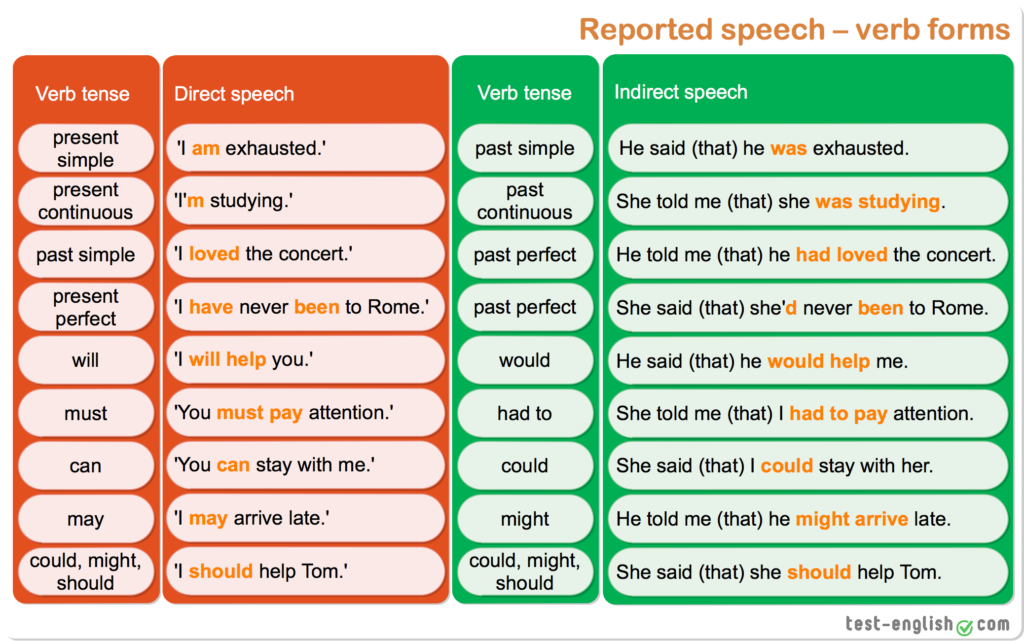Can you feed baby ducks medicated chick starter
Can You Feed Ducklings Medicated Chick Starter?
I’ve read a lot of duck posts that say medicated chick starter is toxic to ducklings. But the truth is, I safely fed lots of ducklings medicated chick starter before I heard it was a no-no.
After that, I stopped for a while but when my feed store ran out of the non-medicated stuff, I had no choice. So, at that point, I did some research to get to the bottom of what the risks were for feeding ducklings medicated chick starter.
Spoiler alert! I didn’t find any. Instead, I found a lot of information on why it’s most likely a non-issue.
Still, as a duck lover, I wanted to understand what was in medicated chick starter so that I could shake that icky feeling that I was doing something risky once and for all. Here’s what I found.
What is Medicated Chick Starter?
Medicated chick starter is designed specifically for chickens who have not been vaccinated for coccidiosis.
Coccidiosis Vaccine
The coccidiosis vaccine contains a small dose of weakened cocci designed to trigger a chick’s immune response without putting them at risk of dying. Vaccines are a biological product regulated by the USDA. They are also allowed to be used in organic eggs and meat.
(Read our Coccidiosis in Chickens post for more information on this chicken disease.)
Medicated Chick Starter
Medicated chick starter works in a completely different way. It doesn’t contain any cocci.
Instead it contains an FDA regulated drug that kills the cocci. Rather than building the chick’s immune system, it prevents overload by killing the cocci until chicks are older and have a working immune system.
When using medicated chick starter you are also not supposed to change the bedding because the residues of dead or weakened cocci shed in fecal matter in the bedding also help to build a chick’s immune system similar to vaccinating.
Note: Using medicated feed in poultry that received the coccidiosis vaccine is a waste of money because the medication in the feed will kill the cocci administered in the vaccine.
Now, with that background, let’s get into what kind of medication is found in chick starters.
Amprolium
Most medicated chick starter available at retail outlets contain a cocci killing medication called amprolium. According to PoultryDVM, amprolium works by “mimicking thiamine (Vitamin B1), which is what cocci require to grow and reproduce inside the chicken. When cocci ingest amprolium, they experience thiamin deficiency and starve from malnutrition”.
This drug isn’t just used in chick starter feed. It also shows up in feed for other kinds of livestock like calves and turkeys. It’s also used to treat mature animals such as mature laying hens or lactating cows.
It’s even sometimes used “extra-label” for dogs, cats, and sometimes even ducks. Extra-label means prescribed by a veterinarian under FDA guidelines. This allows vets to recommend low-risk drugs approved for use in one animal to be prescribed for use in an animal it hasn’t been specifically been approved for.
The FDA also maintains a list of drugs that can’t be used extra-label. Amprolium is not on the prohibited list.
General Safety Risks
The health advisements for amprolium are that long-term use can lead to thiamin deficiency. Also, if you use too much, animals can have hemorrhagic diathesis (excessive bleeding) and die.
When administered in feed, though, the dose is low and limited by what an animal can eat. As such, amprolium is generally considered one of the safest coccidiosis preventatives available.
This is why it is commonly used in feed marketed at retail stores. Unlike many of the other coccidiosis treatments and preventatives, this one is considered safe enough for average consumers who may not even read the label to learn about appropriate use.
Research on Amprolium in Ducks
Ducks don’t seem to be as susceptible to coccidiosis as other poultry even when raised in duck houses. So, there’s not a lot of reason for pharmaceutical companies to test the risks of amprolium in ducks.
As such, I couldn’t find any information about amprolium being unsafe for ducks. But I did find a few things that made me believe it is safe for ducks.
1. One Study
There was one scholarly study that specifically fed amprolium medicated feed to ducks for 4 weeks and found that medicated chick and turkey starters were better for feed to weight conversion ratios. Also, no ill health effects were identified.
2. Expert Advice
Also, there were several professional duck keepers who said they had spoken with veterinarians who said it was fine to use with ducks. Here are two examples of experts stating that amprolium is safe for ducks.
Metzer farms, which is the leading hatchery specializing in waterfowl in the U.S., wrote this post: Can medicated feed be used for waterfowl?
Shagbar Bantams, a hatchery that specializes in call ducks, also wrote a post that confirmed the safety of amprolium and bacitracin. The author says that this has been confirmed with two research veterinarians.
3. Proof of Use
I also found a few instances of amprolium being sold specifically for the use in ducks in other countries. Here’s an example from Australia: Enfield Produce.
Additionally, I found one instance in the US from Purina that seemed to indicate amprolium could be used for a mixed meat bird flock that included ducks.
4. Purina Example
Purina offers an unmedicated duck feed that you can use from hatching to end of life. But they also offer a medicated and non-medicated Flock Raiser designed for use with chickens, ducks, and turkeys in a mixed flock.
The non-medicated flock raiser has no niacin information in the online marketing materials, although it is rated for use with ducks. It also doesn’t say anything about being safe for ducklings.
The medicated flock raiser is primarily intended for broilers/meat birds. Its marketing materials promise “guaranteed niacin levels for ducklings”. So, a reasonable person would consider that product appropriate for ducks, right?
Now, here’s where it gets a little confusing because, in an unrelated blog post on the Purinamills website, the author writes: “Keep in mind ducklings and goslings should not be fed a medicated starter-grower feed. Medicated starter feeds include amprolium, a coccidiostat that is not approved for use with ducks or geese.”
Medicated starter feeds include amprolium, a coccidiostat that is not approved for use with ducks or geese.”
Not approved, though, doesn’t mean toxic. While I can’t speak for Purina, I really can’t imagine a major feed company would make such a huge mistake in marketing an amprolium product for use with ducklings if there was a significant risk for toxicity.
5. No Toxicity Proof
After following hundreds of links, I couldn’t find any examples of amprolium being toxic to ducks. But I found plenty of evidence of it being used by professional and backyard duck keepers without any toxic effects.
Bentonite Advisory
The one piece of information I read repeatedly is that amprolium shouldn’t be used in feeds that contain bentonite. Notices say that the bentonite may cause the amprolium to be unstable.
I couldn’t find any information on what that instability meant for poultry health. I suspect it probably just renders the product ineffective. But, if you use bentonite with your livestock, you may want to do further research.
Why the Rumor?
If amprolium is what’s in medicated chick starter and it’s not really an issue for ducks, why do so many people keep saying don’t use medicated chick starter for ducks?
Amprolium is not the only medication used in chick starter. It’s the only one I could find in every brand sold at all of my local feed stores or that came up in my internet search.
Yet, if you buy chick starter direct from a mill that makes feed for industrial meat birds, you may be able to find a feed that uses a different medication. So, let’s look at those other coccidiosis preventatives used by industrial poultry producers.
Sulfa Drugs
I found several instances of duck keepers attributing the fear of medicated chick starter for ducks to “sulfa drugs”. This class of drugs includes sulfonamides like sulfadimethoxine, sulfadiazine, sulfamethazine, sulfaquinoxaline, sulfathiazole, sulfamerazine, sulfasalazine, and sulfachloropyridazine.
Sulfadimethoxine is FDA approved to treat meat ducks for outbreaks of Escherichia coli, Riemerella anatipestifer, and Pasteurella multocida (fowl cholera). However, this product is prohibited for use in laying ducks and must be withdrawn from ducks 5 days before slaughter to prevent risks of residues in human food.
However, this product is prohibited for use in laying ducks and must be withdrawn from ducks 5 days before slaughter to prevent risks of residues in human food.
Sulfa drugs were extremely popular from the 1940s to about the 1990s. Plus, they are also still in use in industrially raised broiler chickens. However, they have fallen out of favor for two reasons.
First, there’s concern about how much of their residue lingers in meat and eggs and negatively impacts humans. Additionally, because of their antibiotic properties, sulfa drugs are also much more highly regulated than something like amprolium. Fortunately, the FDA has made big crack downs on their use in animal feed.
Unless you live in an extremely rural area heavily populated with industrial chicken houses, you probably won’t find Sulfa drugs in medicated chick starter sold at retail outlets.
Polyether ionophores
Though sulfa drugs may not be entirely safe for humans that eat lots of duck eggs or meat containing them, they are still probably safe for ducks to take in their feed. But, there is one class of drugs that scare the heck out of me.
But, there is one class of drugs that scare the heck out of me.
Polyether ionophores, including Lasalocid, Monensin, Narasin, and Salinomycin, are potentially toxic to all poultry unless used in the exact prescribed manner. Let’s take a look at these drugs and their risks.
Lasalocid
Lasalocid is a hot weather coccidiosis treatment that makes poultry thirsty. Its use requires careful salt intake management. It shows up in a product called Avatec used to treat coccidiosis in pheasants, partridges, quails, and guinea fowl.
Originally, the makers tried to include ducks and geese on the application for approved uses, but they were removed from the approval list “after assessment.” That likely means that they couldn’t prove safety or there was a risk of toxicity.
If this additive is in feed, the label is required by law to say: “FOR BROILER OR FRYER CHICKENS ONLY and/or FOR GROWING TURKEYS ONLY and/or FOR CHUKAR PARTRIDGES (UP TO EIGHT WEEKS OF AGE) ONLY and/or FOR RABBITS (UP TO SIX AND ONE-HALF WEEKS OF AGE) ONLY”.
So, if you are considering using a medicated game bird feed for your ducks, you will probably want to double-check that the medication used is not Lasalocid.
Monensin
Monesin has an endless variety of trade names depending on which formulation is being marketed. But its primarily used for ruminants and sometimes in broiler chickens and turkeys.
It also comes with a risk for paralysis if taken by layers or in high doses by turkeys. In many countries, this is only allowed with a prescription from a veterinarian. Like sulfa drugs, it’s not currently common in retail feed mixes.
Narasin
Narasin is toxic to turkeys. It can also be toxic to chickens when given in conjunction with sulfa drugs. Warnings on the interaction and specific uses for this product should be noted on the feed label.
Salinomycin
Salinomycin is commonly used in the broiler chicken industry. It’s been known to cause paralysis when fed to laying hens.
This is also known to be very toxic to turkeys.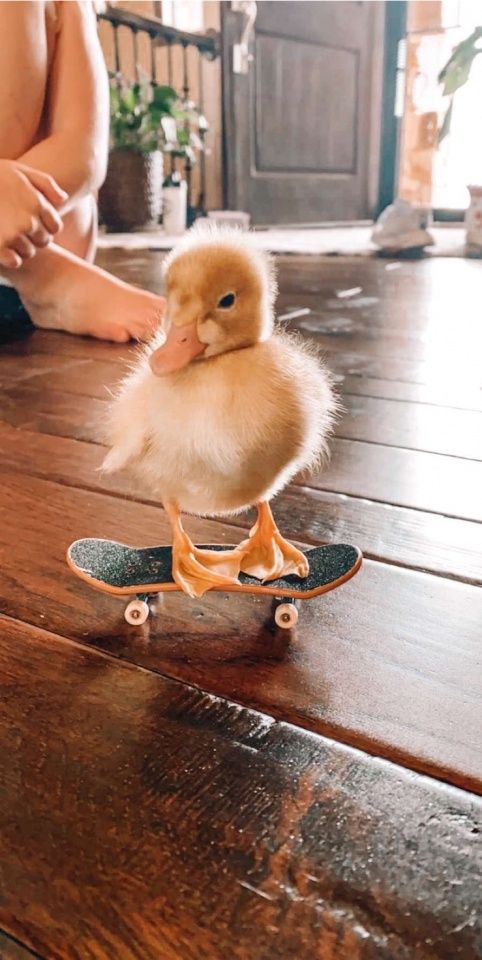 These labels too should come with warnings on safe use and specific livestock applications.
These labels too should come with warnings on safe use and specific livestock applications.
Risk Factors for Ducks
Based on the known risks of polyether ionophores, I believe these could absolutely be toxic to ducks if not used in a manner prescribed by a veterinarian. If by some freak event, you found them in feed marketed for backyard poultry, I’d seriously consider steering clear of them unless recommended by your veterinarian.
Medicated Chick Starter for Ducklings
Now, with all that research in mind, let’s get back to the original question. Can you use medicated chick starter for ducks?
I am not a veterinarian and can’t tell you what to do. But here’s where I stand on the issue.
Non-Medicated Feed is Ideal
Since ducks don’t have the same risks for coccidiosis as chicks, medicated feed is unnecessary most of the time. Also, I prefer to use non-medicated feeds for all my animals. I raise my animals as naturally as I can while keeping them safe, so my risks for coccidiosis are pretty low in general.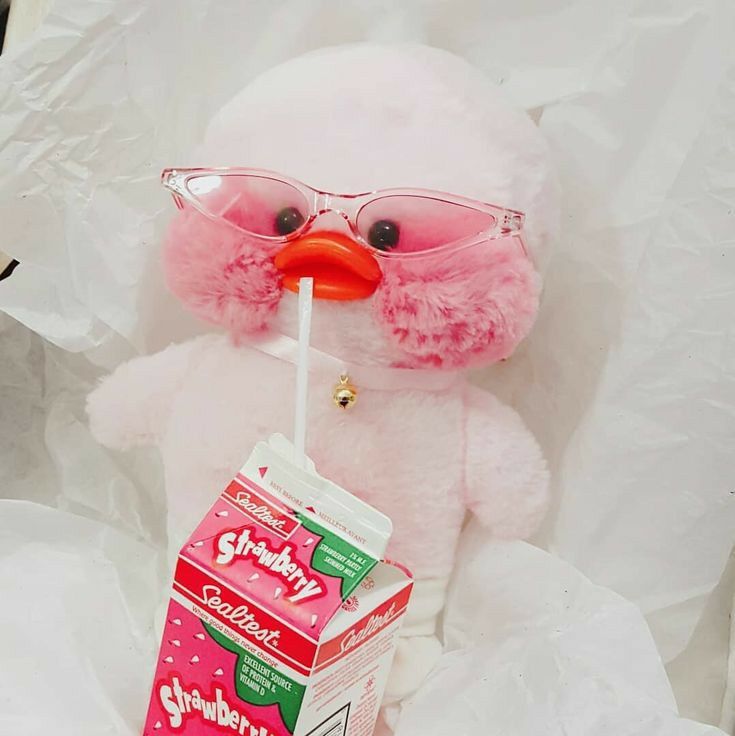
Yet, when medicated chick starter is my only affordable option, I’ll use it if the medication is amprolium and there are no other scary things on the label.
Always Read Labels!
Before I grab any feed bag, medicated or otherwise, I also read the labels carefully to look for any warning signs. For example, I saw one bag several years ago that said: “Only for use with broiler chickens.”
I skipped it – not just for my ducks, but for my laying chicks too. I haven’t seen that product for several years. But even with products I buy regularly, I always double-check the labels just in case they change the information or formulations.
Nutritional Content
For me, I am more concerned about getting the right protein, niacin, and calcium content in duckling feed than I am about amprolium.
1. Protein
Protein is a complicated question with ducks and one that requires its own post. For me, though, since I use duck feed as a supplement to forage (even in day-old ducklings) and not as a complete feed, I want protein above 20%, and preferably more like 24% when I can find it.
For confined ducks though, not eating significant amounts of forage, protein around 20-22% for the first few weeks tend to be more ideal. After that 18% protein rations will help reduce the risk of angel wing developing in ducks who don’t forage intensively.
2. Niacin
Ducks need feed that contains 55–70 mg of niacin per kilogram of feed. I either buy a brand of feed for my ducklings that contains sufficient niacin or I supplement it if the label doesn’t state niacin content.
I’ve never had a duck suffer toxicity from medicated feed, but I have seen niacin deficiency in ducklings. I simply don’t risk it anymore.
3. Calcium
I’ll also take medicated chick starter over layer crumbles in a pinch. This is because layer crumble has a different ratio of calcium to phosphorous than grower feed formulas.
Research suggests that ducklings that get too much calcium relative to phosphorous don’t grow well and can have bone problems. So, rather than trying to figure out how to get the right formulation of phosphorous to calcium, I stick with feeds designed for young poultry instead of laying poultry for ducklings.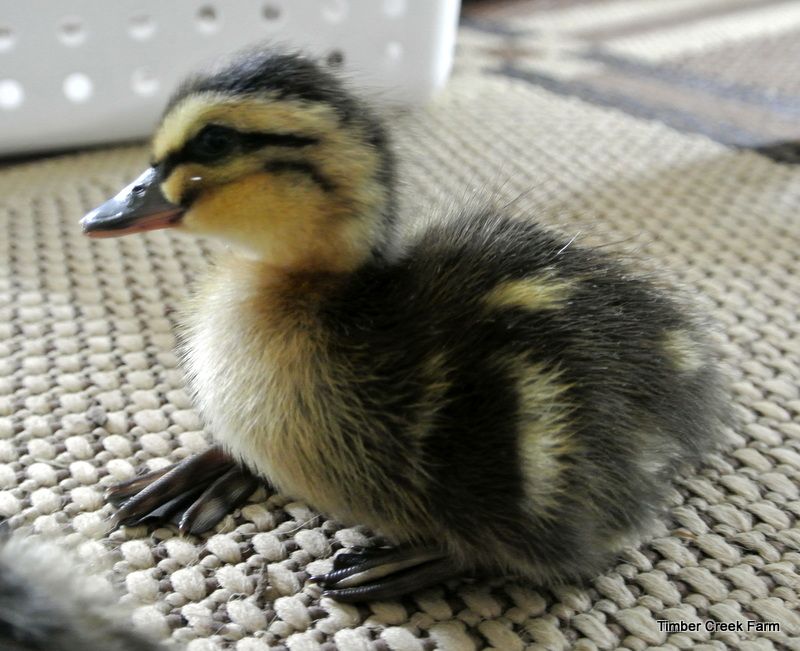
Final Advice About Duckling Feed
If you can find it and afford it, feed formulated for ducklings is the best way to go. Also, don’t forget to always read those labels to know the risks and make sure you use the product as it is intended.
Now, the fact that you read this post in its entirety means you care about your ducks and are willing to put in the work to make informed choices. So, if you must choose an alternative duckling feed, just take a deep breath and trust your instincts.
In my experience, Good Research + Calm Use of Intuition = Peace of Mind in all things homestead.
Was this article helpful?
Yes NoCan ducklings eat medicated chick starter feed? | BackYard Chickens
JavaScript is disabled. For a better experience, please enable JavaScript in your browser before proceeding.
- Thread starter ChickenJill
- Start date
Sort by date Sort by reaction score
ChickenJill
In the Brooder
I have ducklings and chicks. Can they eat the same food?
Can they eat the same food?
BrattishTaz
Roo Magnet
The ducks really need to be on non-medicated starter.
ChickensAreSweet
Heavenly Grains for Hens
The feed store told me once that it would kill ducklings.
I was about to buy a duckling along with all our chicks.
Speceider
Songster
It's fine if the medication is amprolium. Be sure to add niaqcin.
Clint
Oregon Blues
Crowing
Amprolium is absolutely safe for ducks. It was the old medicated chick starter of many decades ago that ducklings couldn't have. Information seems to be lagging about 40 years behind reality. Old wives tales get repeated over and over just like they are the truth.
ChickieBooBoo
Cold Canadian Chick
I've done it both ways, but now I use mostly chick starter because its a few dollars cheaper.
DB_Tex
Songster
still need niacin though.
D'Angelo N Va.
Songster
I was told, I think from someone on here a while back not to use medicated for the ducks. I have been afraid to try it.
ChickieBooBoo
Cold Canadian Chick
D'Angelo N Va. :
I was told, I think from someone on here a while back not to use medicated for the ducks. I have been afraid to try it.
I was too, the guy at the feedstore said not to. But I just raised a bunch of Muscovy ducklings with a batch of chicks and didn't have any problems with the feed.
1234duck
Songster
The medicated chick starter is fine for both baby chickens and ducklings.. as Oregon Blues said in the post, a longggg time ago it wasn't good but its fine now. I also use it and have no problems. Good luck with your little ones, ~Julie~
I also use it and have no problems. Good luck with your little ones, ~Julie~
Kalmbach feed or Manna pro?
- Ilovemychicks08
- Ducks
23
- Replies
- 21
- Views
- 277
Ilovemychicks08
1 duckling with niacin defiency, only eating mealworm for now and 1 more duckling not eating or drinking at all.
- lychi
- Ducks
2
- Replies
- 14
- Views
- 713
lychi
Should I be adding water to my ducklings food?
- HatchingDucklings123
- Ducks
2
- Replies
- 13
- Views
- 510
Aunt Angus
ducklings only eat when hand fed
- Herb81003
- Ducks
- Replies
- 4
- Views
- 269
Luv Ducks
What to feed my new ducklings?
- Harley8181
- Ducks
2
- Replies
- 10
- Views
- 284
FBMcrazy8
Share:
Reddit Pinterest Tumblr WhatsApp Email Share Link
Top Bottom
types of feed, diet and norms
For normal development and rapid weight gain, ducklings need to receive high-calorie balanced feed from the first days of life that meets the needs of age and direction. Health, survival, livestock productivity and, accordingly, the profitability of the economy primarily depend on the proper nutrition of birds. Thanks to a well-designed diet and feeding regimen for ducks, it is possible to improve the quality of the final product and reduce veterinary costs, both at a large poultry farm and at home. nine0003
Health, survival, livestock productivity and, accordingly, the profitability of the economy primarily depend on the proper nutrition of birds. Thanks to a well-designed diet and feeding regimen for ducks, it is possible to improve the quality of the final product and reduce veterinary costs, both at a large poultry farm and at home. nine0003
- What foods are good for ducks?
- Benefits of feeding ducks specialty feeds
- Features of the spring-summer diet
- Nuances of feeding in winter
- Prohibited products
- Norms and diet for ducks of different ages
- Benefits of compound feed for ducks produced by MEGAMIX Group of Companies
What foods are good for ducks?
| Cereals are the main component of feed mixtures. They contain a lot of proteins, carbohydrates, vitamins and fiber necessary for good growth and muscle gain. |
|
| Legumes are a high-calorie source of protein |
|
| Juicy feed enriches the diet of ducks with vitamins, stimulates appetite |
|
| Animal products are necessary for the normal development of the bird's body, rapid weight gain or increase in egg production. |
|
| Minerals are important for good food digestion and egg formation. |
|
Benefits of feeding ducks specialty feeds
High-quality ready mixes are biologically safe and balanced. They are made from natural components of plant and animal origin, which has passed multiple tests. They use the most digestible grains as the main ingredients. Starter mixtures can be additionally enriched with pure amino acids obtained in the laboratory. nine0003
They are made from natural components of plant and animal origin, which has passed multiple tests. They use the most digestible grains as the main ingredients. Starter mixtures can be additionally enriched with pure amino acids obtained in the laboratory. nine0003
Ready mixed feeds and meet the age needs of birds. In the production process, they undergo short-term heat treatment, which destroys harmful microorganisms, but does not have time to destroy useful substances. The use of purchased compound feed simplifies the care of ducks and frees the poultry house from additional work on the preparation of mash.
Features of the spring-summer diet
During this period, the chicks are actively growing and gaining weight. If the breeder specializes in meat breeds, then feeding is limited only to the spring-summer season. In large farms, where birds do not have the opportunity to walk, ducks are given compound feed 4 times a day. For home breeding, summer is also the best period. On small farms or in subsidiary farms, wet mashes are usually alternated with a mixture of cereals and fresh herbs, and concentrated mixtures are used instead of complete feed to enrich the diet. nine0003
On small farms or in subsidiary farms, wet mashes are usually alternated with a mixture of cereals and fresh herbs, and concentrated mixtures are used instead of complete feed to enrich the diet. nine0003
In duck breeding, the cultivation of birds in water bodies is used, however, such conditions are not suitable for all breeds. The advantages of the method are that ducks independently extract all the necessary nutrients. However, to gain weight, they need to additionally give high-calorie feed. Because of this, the fattening time can increase up to 4-6 months. instead of 2.5. However, as a result, the breeder receives lean, juicy meat with excellent taste.
Nuances of feeding in winter
In egg breeds, the diet during the cold season changes significantly. The amount of succulent fodder and greens is reduced. Instead, the proportion of meat and bone and fish meal, dried hay, and boiled vegetables is increasing. Ducks need to be fed only twice a day: in the morning and in the evening. The main volume is made up of grain mixtures, wet mixers. To compensate for the deficiency of proteins, vitamins and calcium, special premixes or protein-vitamin-mineral complexes are used.
The main volume is made up of grain mixtures, wet mixers. To compensate for the deficiency of proteins, vitamins and calcium, special premixes or protein-vitamin-mineral complexes are used.
In winter, it is important to ensure that egg breed ducks receive enough calories, but do not gain excess weight, since obesity leads to a decrease in productivity. nine0003
Prohibited products
Despite the fact that ducks are almost omnivores, some foods can harm them. It is not recommended to give the bird:
- Moldy feed. Mycotoxin poisoning can lead to serious consequences.
- Fine flour. It can clog the nose and swell in the stomach, causing a false feeling of fullness. As a result, ducks receive less nutrients, eat less feed, and gain weight worse. nine0006
- Bread. Such food causes dysbacteriosis and upset of the gastrointestinal tract in the bird's body. Only crackers in small quantities are allowed.
- Fresh milk. In the stomach, it is not absorbed, but folds, causing indigestion.

- Poisonous herbs for ducks: celandine, cocklebur, henbane, poisonous milestone, maple leaves, etc. When chopping fresh herbs, you need to carefully check all the plants.
- Fresh nettle. Untreated stems and leaves can burn the walls of the stomach and lead to irritation of the gastrointestinal tract. nine0006
- Cucurbitaceae, in particular cucumber and marrow. Their excessive use provokes the excretion of calcium.
- Vegetable and fruit cleaning. They are too dense and hard to digest.
Norms and diet for ducks of different ages
Calorie and nutrient requirements change in chicks as they grow. When choosing feed for ducks, you should pay attention to its labeling and composition.
In the period up to 4 weeks, the digestive system of the chicks is still not sufficiently formed, easily digestible proteins predominate in the feed. Enzymes are added to the feed mixture to improve digestion. The diet of ducklings is enriched with organic acids, vitamins, macro- and microelements, which are responsible for the formation of a strong skeleton and the normal development of internal organs. Since the immunity of chicks is weaker than that of adult ducks, coccidiostatics are added to the starting compositions. These substances destroy pathogens and prevent the massive spread of coccidiosis among young animals. nine0003
Since the immunity of chicks is weaker than that of adult ducks, coccidiostatics are added to the starting compositions. These substances destroy pathogens and prevent the massive spread of coccidiosis among young animals. nine0003
In the finishing phase (4-8 weeks), ducks require less protein. The protein content in the feed is reduced, but the amount of carbohydrates and fiber is increased so that the bird gains weight faster. Laying ducks require specialized feed. It contains antioxidants that increase the productive period of birds and improve the palatability of eggs.
The feeding schedule is developed taking into account the age of the bird, the season, the size of the livestock and the characteristics of a particular breed. Violation of the recommended regimen can provoke gastrointestinal diseases and blockage of the goiter. In the starter phase, food is given frequently, but in small portions. As the ducks grow older, the dosage increases. By the finish stage, the number of feedings is gradually reduced to 2 times a day.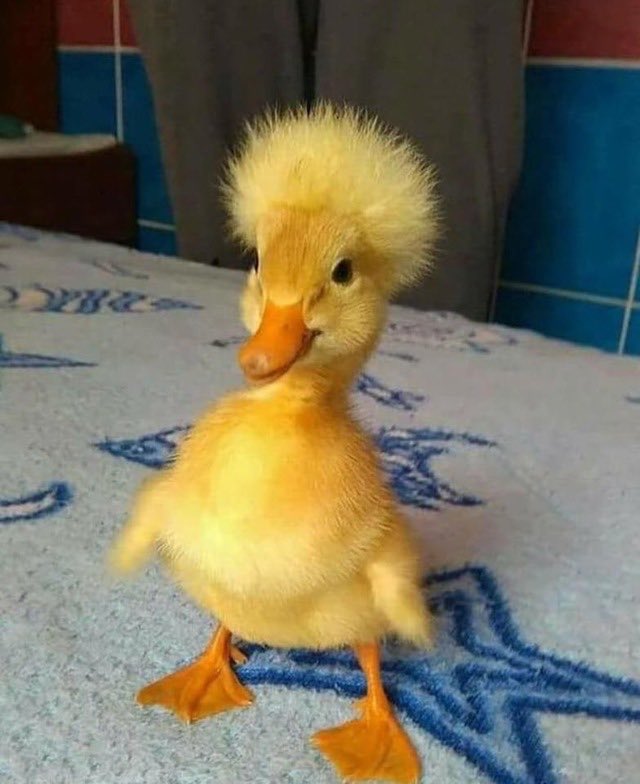 nine0003
nine0003
Feeding large portions increases the average daily weight gain of birds. It usually takes 2.5 months to raise ducks for meat. Birds are kept in separate pens or cages and restricted in movement so that they gain mass faster without wasting calories on movement. They are fed high-calorie mixtures containing a large amount of cereals and starch. Wet mixers are filled with whey. 2 weeks before slaughter, fish products are excluded from the diet.
During the period of active laying, ducks need to provide a varied diet with a high content of vitamins. In winter and early spring, it is useful for laying hens to give sprouted grains of oats, wheat and barley in the amount of 10–15 g. Every day, the bird needs to drink about 1 liter of water, so it is not recommended to feed it with wet mash. The diet of egg breeds should include yeast rich in B vitamins. nine0003
The MEGAMIX company produces all types of complete mixtures for ducks of various ages.
PK-21 Starter feed for ducklings from 0 to 4 weeks
PK-22 Finishing composition for young animals 4-8 weeks, accelerating weight gain
Benefits of compound feed for ducks produced by MEGAMIX Group of Companies
You can order all types of feed mixtures for ducks and geese from us. The company has created all conditions for the production of high-quality feed: nine0003
The company has created all conditions for the production of high-quality feed: nine0003
- our products meet the age and species requirements of the bird;
- all components are mixed with high precision and carefully processed on modern equipment;
- incoming raw materials and final product are tested for safety in a world-class laboratory;
- prepared feeds are stored in ventilated warehouses and are not affected by mycotoxins;
- wet mixes are packaged in special packaging that maintains the required moisture level throughout the entire shelf life. nine0006
Here you can buy ready-made compound feed for ducks or order the development of a product according to an individual recipe. The company's technologists will advise you on the best way to feed ducks, calculate product rates for birds of different ages and give useful advice on livestock keeping conditions.
How to care for ducklings at home in the first month of life
Good afternoon, experienced and beginner poultry farmers. Ducks are my new feathered favorites. I have had them for four years. Little ducklings are adorable. I advise everyone to get ducks, and how to care for ducklings at home in the first month of life - here are my 12 tips for beginners. nine0003
Ducks are my new feathered favorites. I have had them for four years. Little ducklings are adorable. I advise everyone to get ducks, and how to care for ducklings at home in the first month of life - here are my 12 tips for beginners. nine0003
Contents of the article:
- 1 How to care for ducklings at home
- 1.1 1. Do not keep chickens and ducklings together
- 1.2 2. Ducklings must have a complete starter compound feed
- 1.3 Add beer yeast to them 3.3
- 1.4 4. Protein is not important for ducklings
- 1.5 5. Do not let little ducklings into the cold pool
- 1.6 6. By the way, about water
- 1.7 like to walk
- 1.9 9. Brooding temperature drops quickly for ducklings
- 1.10 10. Ducklings need a lot of dry bedding
- 1.11 11. Use a plastic brooder
- 1.12 12. Watch and have fun!
- 1.13 Choosing the most modern incubators
Ducklings are easy to care for. In my opinion, raising ducklings is easier than raising chickens. Ducklings are much more hardy and tenacious than chickens. It makes me very happy!
In my opinion, raising ducklings is easier than raising chickens. Ducklings are much more hardy and tenacious than chickens. It makes me very happy!
While ducklings are easy to care for, ducklings need to be raised a little differently than chickens. nine0003
Before you start babysitting ducklings, find out their needs, organize the best care for ducklings at home.
1. Don't keep chickens and ducklings together
Although you can practically raise ducklings and chickens together, this is not a good idea. Ducklings love water. They'll make a wet mess in the brooder. And wet chickens are a big risk of colds and death.
Ducklings grow incredibly fast. And in a couple of weeks there will be twice as many chickens. Therefore, ducklings can trample and damage chickens. For these two reasons, I do not recommend that you place them to grow together. nine0003
2. Ducklings should have complete starter feed
How to care for ducklings at home and what to feed? Finding a duck starter is almost impossible in most regions of Russia and the former USSR. Feeding ducklings regular chicken starter feed is completely normal. Just make sure this food is drug-free!
Feeding ducklings regular chicken starter feed is completely normal. Just make sure this food is drug-free!
Why? Ducklings eat much more chickens, so they may have an overdose of medicine per day.
By the way, drugs for coccidiosis are usually added to the starter. But ducklings are not afraid of this disease!
3. Add brewer's yeast to their food
If you can't find a duck starter, chicken food is a lifesaver. But ducklings require more vitamin B3 (niacin) for health and full growth. An excellent, readily available, and fabulously cheap solution to B3 deficiency is brewer's yeast.
Even simple baker's yeast will do, ferment the feed and it will grow "on the yeast". nine0003
4. Protein is not important for ducklings
For the first couple of weeks, 20-22% protein in the feed will be enough. Further, by about 3 weeks we dilute the feed with oats. No meat broths! Read more about feeding ducklings here.
5. Keep little ducklings out of the cold pool
Domestic ducks are not at all like their wild counterparts. In the wild, the mother coats the down of the ducklings with her lard to make them waterproof. What does not happen with a domestic duck that has hatched from an incubator. Domestic ducklings can get sick from cold water and die, and even drown. nine0003
In the wild, the mother coats the down of the ducklings with her lard to make them waterproof. What does not happen with a domestic duck that has hatched from an incubator. Domestic ducklings can get sick from cold water and die, and even drown. nine0003
This doesn't mean they can't play in the water. They love water and will splash in it whether you like it or not. It is better to put a shallow basin several times a week with warm water so that they can play and splash around. A shallow mini pool from which they can easily get out.
But as soon as the ducklings are completely covered with feathers, let them bathe in the water ad libitum.
6. Speaking of water
Ducks need water. It's obvious, right? But they need a lot of water. And not just for swimming. They even drink incredible amounts of water. Adult ducks can drink up to 2-2.5 liters of water per day. Ducklings and ducks completely submerge their beak in the water, away from any debris. Therefore, nipple drinkers will not suit them in any way! nine0003
For ducklings to drink, it is better to put deep bowls so that they can immerse their beak with nostrils. The depth of the drinker depends on the size of the beak, i.e. on the age of the ducks.
The depth of the drinker depends on the size of the beak, i.e. on the age of the ducks.
7. Treats in moderation and unlimited greens
Treats such as shredded cabbage, beet and carrot tops, all kinds of leafy lettuces, etc. These are your feathered, webbed friends' favorite treats. Slice and toss in a bowl of water for a fun show. Ducklings will have so much fun that you will forget about the TV. It's fun! nine0003
Fresh herbs, medicinal herbs and wild plants will be a great addition to their diet. Fresh watermelon, some boiled pumpkin, scrambled eggs, and any other treat you give your chickens is great for your ducklings. But in moderation. Do not give ducklings slices of bread . If ducklings are still living in a brooder, then put sand for better digestion.
8. Ducklings are very fond of walking
If it's warm enough where you live, take the ducklings to the promenade to stretch and eat outside! Exercise is very important for these little waddlers, especially since they grow so fast. Therefore, take them out into the yard if the weather permits. nine0003
Therefore, take them out into the yard if the weather permits. nine0003
For a short time, but every day, let them explore the world. Then it is important to bring them home, let them warm up in your brooder.
9. Temperature for ducklings in a brooder drops quickly
Another reason not to keep chicks and ducklings together. Brooding temperatures for ducklings are reduced by about 7 degrees per week instead of 3 degrees for chicks. Webbed babies will let you know if they are cold. Just like chickens, they will snuggle up to each other. If they are hot, they will move away from the heat source, open their beaks and breathe heavily. nine0003
When should ducklings be moved outside in summer? Ducklings are usually ready to live outdoors by 6 weeks of age, which is completely unacceptable with chickens. But if the night temperature is 10 degrees and below? It's better to keep them at home for a couple more weeks.
10. Ducklings need a lot of dry bedding
In short, ducklings (and ducks) are messy. I'm not going to lie and say that they are the cleanest, most problem-free birds, this is very far from the truth. Every time they find a little water, they will splash in it. nine0003
I'm not going to lie and say that they are the cleanest, most problem-free birds, this is very far from the truth. Every time they find a little water, they will splash in it. nine0003
Notice how the ducklings eat. They grabbed food and drank water. Again grabbed food, again washed down with water. Water will be everywhere! It's a wet, dirty mess in a brooder. I am not telling you this to discourage you from raising ducks. I am convinced that they are an amazing addition to any household animal.
Be aware that you will need to change your brooder bedding to dry at least 3 times a day. Better stock up on shavings and sawdust.
11. Use plastic brooder
And make sure it's big enough for these fast growing giants. We have a homemade wooden brooder for our chickens that has been serving for many years. But in wooden boxes, ducklings will be uncomfortable. How to dry it?
I strongly recommend that you find something plastic, something big. Inflatable paddling pool, big tank, old tub. ..
..
If you don't have anything plastic or don't want to keep waterfowl in your tub (okay, that's not a bad thing), then you need to put polyethylene under a wooden brooder. And fix its ends higher so that this dirty mess does not flow all over the floor of the room where you grow ducklings. nine0003
12. Watch and have fun!
Ducks are by far the funniest bird I have ever picked up. Ducklings are more playful and fun than chicks. Chickens certainly have a special place in my heart, but these clawed chicks and chicks are amazing and adorable creatures.
They grow really fast, so enjoy them while they're little fluffy balls of energy splashing around in their bowl of water. Then you can enjoy their barnyard antics and some huge, fresh eggs (or tasty, healthy meats). nine0003
I advised how to take care of ducklings at home. Ducklings and ducks have their own problems. Heard many people say that they are too dirty and smelly birds. I tend to disagree, my chickens are filthy little creatures of God too.

 It contains about 2-3% fiber, which improves digestion. Most carotene, necessary for the synthesis of vitamin A, is found in yellow varieties of corn. The volume of this culture in the diet of ducks can be up to 50% of the total amount of feed. nine0006
It contains about 2-3% fiber, which improves digestion. Most carotene, necessary for the synthesis of vitamin A, is found in yellow varieties of corn. The volume of this culture in the diet of ducks can be up to 50% of the total amount of feed. nine0006  Like oats, barley has a rough skin that is difficult to digest. In feed, it is used in powdered form.
Like oats, barley has a rough skin that is difficult to digest. In feed, it is used in powdered form. 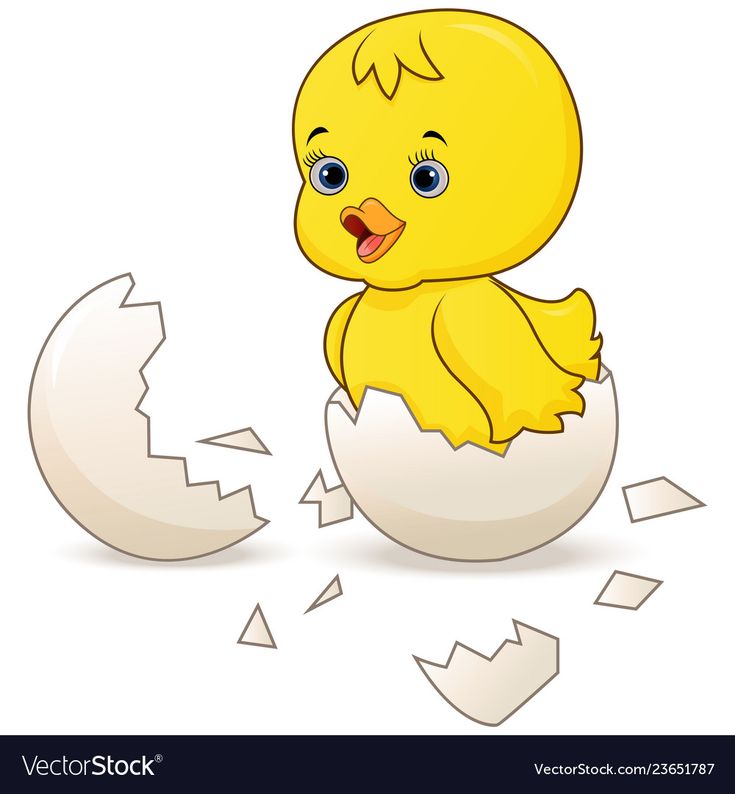 Birds with appetite eat elodea, ryama, pondweed, duckweed, etc. and well assimilate vitamins and microelements contained in plants. From the 2nd week of life, ducklings can be given no more than 15 algae per day. Adults at the fattening stage require about 50 g per day.
Birds with appetite eat elodea, ryama, pondweed, duckweed, etc. and well assimilate vitamins and microelements contained in plants. From the 2nd week of life, ducklings can be given no more than 15 algae per day. Adults at the fattening stage require about 50 g per day.  The product is recommended to be added to the feed for ducklings, starting from 5 days of age in an amount up to 5% of the total volume. In the diet of adult birds, its share increases to 10%.
The product is recommended to be added to the feed for ducklings, starting from 5 days of age in an amount up to 5% of the total volume. In the diet of adult birds, its share increases to 10%. 


